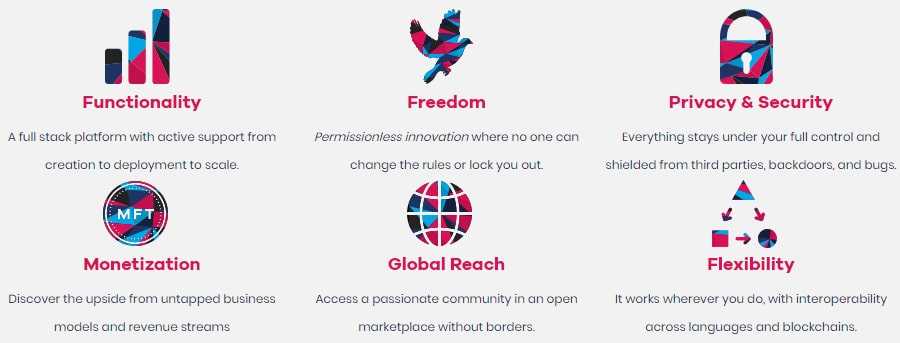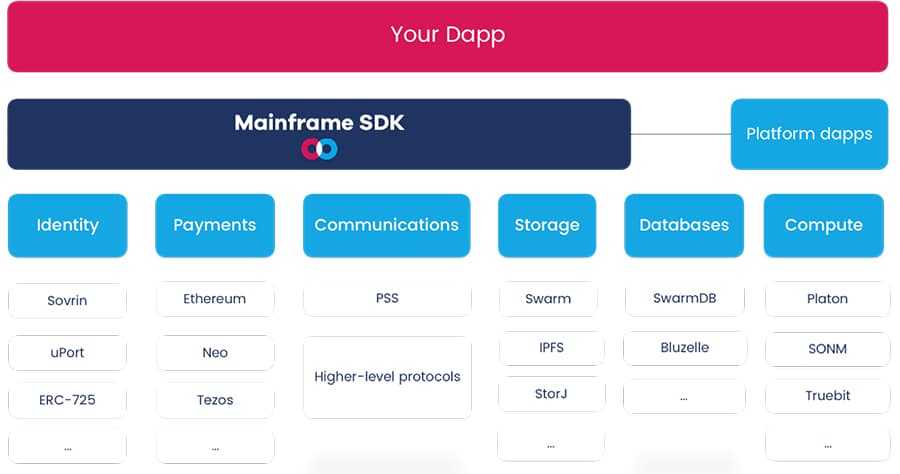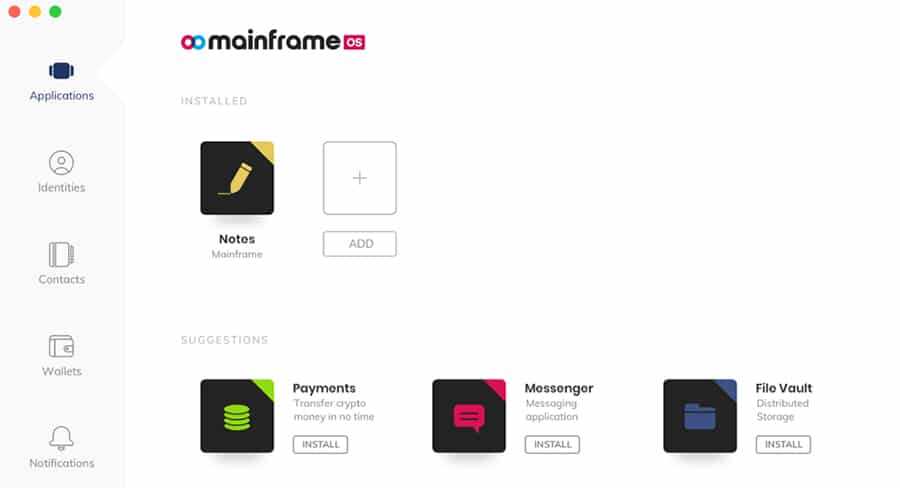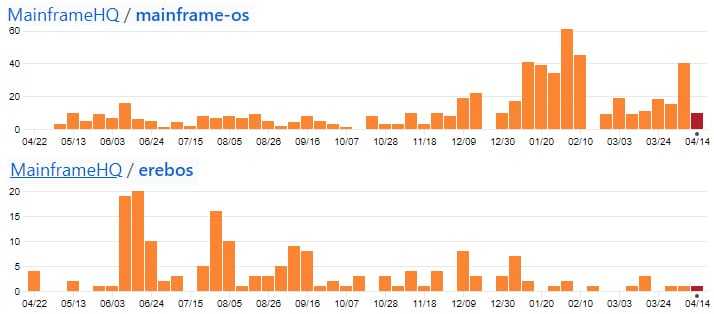Mainframe Review: Decentralised App Development Platform
Mainframe (MFT) is a blockchain project aiming to create a platform for distributed apps that will seal the holes in the privacy and security of the current internet architecture.
It provides several new tools, including censorship resistance, surveillance resistance and data privacy, all predicated on a fully functional platform where protocols are abstracted away so that developers can focus on building their dApp without compromises.
However, can they really execute on their ambitious plans?
In this Mainframe review, I will try to answer that by diving into their technology, use cases and development goals. I will also analyse the long term adoption potential of the MFT tokens and whether they should at all be considered.
Idea Behind Mainframe
The driving reason behind the development of Mainframe was to restore freedoms and privacy to internet users by removing centralization. The mainframe team has a deep belief that users should be able to control access to their online data, and that there should be tools available that enable you to share and reveal only those things about yourself you wish to make public.

The mainframe team realizes that citizens have continually seen a decline in the trust of their governments as well as the trust in the media and corporations. Over the past decade we’ve seen billions of users data accessed through dozens of security breaches at companies such as Yahoo and Equifax.
Users are seeing that internet usage comes with huge risks, and the declining trust in our governments and corporations has led to protests such as Arab Spring and Occupy Wall Street among others.
Mainframe is looking to put an end to security breaches by creating a fully decentralized web3 communications network. It will give back user privacy and control over personal data.
Mainframe Technology
Mainframe is creating a platform that will give secure data services and file storage, among other things. One of the ways it is making this possible is by creating a peer-to-peer network that is built on top of the Internet Protocol Suite as a virtual network. This configuration makes it impossible to determine node locations, and prevents hackers from targeting any of the Mainframe nodes.
The nodes allow communication to occur between layers of the network. This includes basic packet routing and holding, but also encompasses data services, file storage and blockchain transactions. All of this is done using an unhosted, decentralized service.

The Mainframe network has been built with five underlying fundamental principles:
- Encryption: One of the keys to providing secure and private data is encryption. This is the main way to keep others from seeing the information in messages and knowing who the senders and receivers are. Encryption will occur at each node using either a pre-shared key or the public key of the receiving node. To cut down on network and CPU loads Mainframe also allows for shared key negotiation.
- Dark Routing: This makes it impossible for outsiders to monitor or track messages on the network. Mainframe accomplishes this by giving nodes the responsibility of selecting the specificity of message addressing. It’s a delicate balance as too little specificity will delay message transmission, but too much specificity makes it easier for hackers. Mainframe has its own algorithm to determine the correct level of specificity for each message. The network also ensures security by using topic IDs to allow encryption for group members who have previously agreed to it.
- Incentivization: The MFT token serves as an incentive for nodes to provide file storage, data services, and the necessary bandwidth for packet relay and storage.
- Peer-to-Peer Architecture: By decentralizing data services configuration settings and messages are securely stored on the blockchain network. It is also possible to store messages when nodes are disconnected from the network. This configuration ensures censorship and reliance on an individual’s infrastructure is not allowed.
- Interoperability: With Mainframe a user can access the network and its applications anywhere that private communications are required. As long as the blockchain has smart contract support the Mainframe secure messaging network will work. This includes Ethereum, Tezos and RSK.
The Mainframe OS
The Operating System for the Mainframe network is where developers will be able to build their Decentralised Applications (dApps). It is an integrated development and execution environment which will simplify the creation and use of the dApps.
The OS has a user friendly interface and a number of other features. These include one click installs, easy onboarding, developer tools, mainframe SDKs and permissioned access to data. Below is a screenshot of the mainframe OS User Interface.

If you are a developer and wanted to start building on Mainframe then you can head on over to their developer docs. These are well laid out and take you through the dApp development process step-by-step. The mainframe OS has just undergone an upgrade (more below).
The Mainframe Team
The Mainframe team is led by founder and CEO Mick Hagen. A former Princeton student and dropout, Hagen founded the company Zinch, which helped students locate scholarships, while also enabling college networking and recruiting. That company grew to include over 800 universities globally and was acquired by Chegg, a U.S. education technology company.

The head of business development at Mainframe is Brad Hagen, who was also a co-founder of Zinch. Later he worked as a VP at Lendio and was a co-founder of Studio/Brandr.
They are joined by Sarah Wiley in the VP of Engineering position at Mainframe. Wiley brings over 20 years of experience as a full stack developer, and her specialization is highly scalable web applications. She is new to blockchain development, but has been eagerly learning and applying her knowledge to the project.
The remainder of the team is comprised of roughly one dozen individuals in disciplines ranging from software engineering to social media strategy.
Mainframe Social Channels
Mainframe has been extremely successful in building their Telegram channel, mostly because it was necessary to join the Telegram channel to participate in the airdrop. The Telegram channel currently has over 90,000 members.
Other social channels haven’t been as successful. Mainframe has just 248 readers on its sub-Reddit, which is extremely small for crypto-projects on Reddit. Interaction is limited with weeks between posts and very few, if any, comments.
Twitter is a bit better with 17,600 followers, although again there isn’t a lot of activity. Where some projects routinely tweet multiple times a day, in some cases several days go by without a tweet from the Mainframe project.
Both Facebook and Youtube channels have just under 1,500 followers/subscribers, which is small for Facebook, but not bad for Youtube when compared with other crypto-projects.
Overall I would say the social networking of the project has some improvements to be made.
The MFT Mainframe Token
Mainframe created 10 billion MFT tokens and released half of those. 2.5 billion have been allocated to the company for ongoing development, but the other 2.5 billion were released during a series of physical airdrop events held at cities around the world, which culminated with an online global airdrop that distributed tokens to hundreds of thousands of users. I believe it was the largest airdrop ever.
The physical airdrops took place from March through June 2018 and the final global airdrop occurred on July 4, 2018. At that time one MFT token was worth $0.02. Price reached an all-time high of $0.024557 just a few days later on July 9, and spent the rest of 2018 falling as part of the massive bear market in crypto.

It reached a low of $0.002453 on December 15, 2018, and spent a couple of months lingering below the $0.003 level. By April 2019 price had climbed through the $0.003 level and was testing the $0.004 level as cryptocurrency markets were recovering.
The MFT token is a utility token for the Mainframe network and is an ERC-20 based token. This means that you can store it in any ERC20 compatible wallet such as MetaMask or MyEtherWallet. This is perhaps the most prudent given the inherent risk of centralised exchanges.
If you want to invest in MFT because you feel it is currently underpriced you can buy it on a few exchanges. Over 95% of the volume for MFT is currently on either Binance or Upbit. Then, coming in at distant third is Bittrex with only 3% of the remaining volume. It is listed on other exchanges, but with negligible volume.
Even though most of the volume is currently being traded on these two major exchanges, there still appears to be healthy levels of liquidity. However, MFT is likely to still be quite volatile going forward given the vagaries of the Korean crypto market.
Mainframe Development & Roadmap
One of the best ways to determine how much work is being done on a blockchain project is to look at the coding activity in their public GitHubs. Therefore, I decided to take a peek into the Mainframe GitHub repos to see the progress that the team is making.
There are a whopping 88 repositories in their GitHub. However, most of the work has been done in a few key repos. Below is the total commits from 2 of their most active pinned repositories:

As you can see, there has been quite a bit of activity from the developers over the past year as they have actively been pushing code. This is generally more than we see on other projects at similar stages of their development.
There are also a few other repositories that we have not listed above that have had numerous commits over the same period. This frenetic pace in development could be as a result of the ambitious roadmap that the team has ahead of them.
There are four main areas that they are currently working on and these include the Developer Experience, the End-User experience, Mainframe Apps and Erebos / Morpheus UI. We won't go into detail in this post but you can see their full roadmap here.
One of the most important updates was the release of their new version of Mainframe OS. Below is their video teaser of the public launch.
The new OS features a number of updates which include new developer and user features. They have also improved on the User Interface and will debut a number of dApps which the team hopes will attract new users.
If you wanted to follow the latest updates from the team on both the Mainframe OS release as well as the other important developments then you can check out their official blog.
Conclusion
Mainframe has an excellent mission, but it is also similar to many other decentralized projects looking to provide improved security and data protection for users. The team has a working messenger that functions similarly to Telegram, but with complete user privacy.
They are also well on the way to releasing a developer portal and the Mainframe OS is launching on April 15, which could provide a boost for the MFT token.
Ultimately the adoption of Mainframe will depend on how quickly they can deliver, how effective their products are, and how well they spread the word about Mainframe. Given their poor social media marketing so far it’s not sure how well they can spread the word, although they did quite well during their airdrop campaign.
With the launch of the Mainframe OS this could be the year the project itself takes off as well. Or it could be the year we learn how much the project will struggle to find its niche.
Disclaimer: These are the writer’s opinions and should not be considered investment advice. Readers should do their own research.
